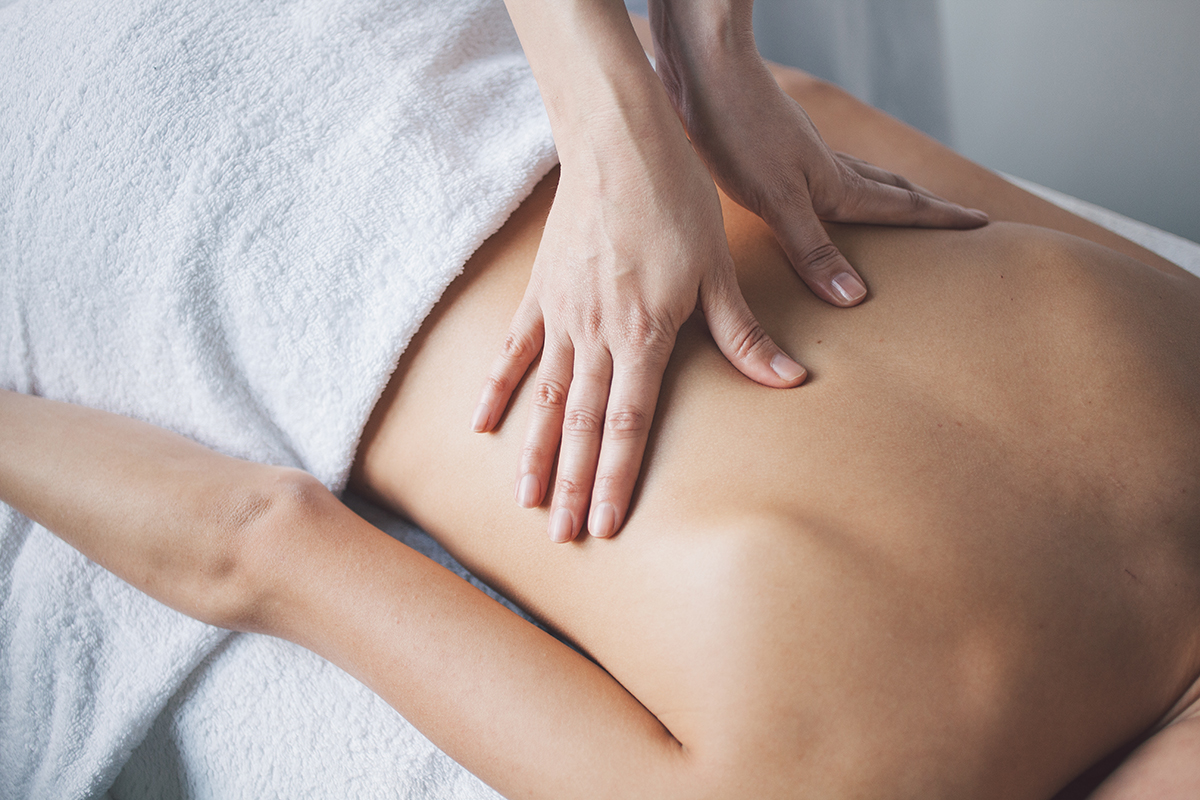Fibromyalgia is a complex condition affecting around 2-5% of the Australian population, mainly young to middle-aged women. The condition causes pain and muscle stiffness in many parts of the body, and leaves the sufferer feeling fatigued and with difficulty sleeping. Thankfully for sufferers, massage therapy can help manage the symptoms of fibromyalgia by relaxing the muscles, improving circulation, and softening joint pain and tenderness.
What is fibromyalgia?
Fibromyalgia is the name given to a group of conditions that cause widespread chronic pain, joint tenderness, fatigue, insomnia, memory loss and mood changes. Fibromyalgia isn’t a disease, but rather is part of a group of clinical syndromes that can be managed.
Fortunately, fibromyalgia isn’t life-threatening and doesn’t cause joint or muscle deterioration. However, it does present a challenge to the sufferer as symptoms are variable and can negatively impact daily life and wellbeing. There’s no known cause of fibromyalgia, but it’s suspected that genetics plays a role, as well as certain triggers such as emotional or physical stress or pain.
How massage can help manage fibromyalgia
Since fibromyalgia consists of a range of different symptoms affecting both physical and mental health, one of the best treatments can be complementary and alternative (CAM) therapies. In one study, as many as 90% of sufferers reported that they use CAM therapies to help manage their symptoms.
One form of therapy widely used by fibromyalgia sufferers is massage therapy. Massage can help manage fibromyalgia symptoms through the application of specific therapeutic techniques to areas in the body where pain is experienced. It’s also used to help relax the mind and release stress, as stress can trigger symptoms in fibromyalgia sufferers.
There are a few styles of massage that can be very effective for managing symptoms of fibromyalgia. These are outlined below.
Myofascial release massage
This massage technique focuses on manually stretching the ‘fascia’ – the band of connective tissue beneath the skin. This releases muscle pain and tightness, and improves blood flow, stimulating better circulation and bringing more fluid to the muscles and joints.
Deep tissue massage
Deep tissue massage targets the deeper layers of muscle through the use of deep, slow, and smooth strokes. This type of massage is particularly useful in releasing chronic muscle tension, as well as targeting the trigger points that cause knots, pulled muscles and headaches.
Swedish massage
For fibromyalgia sufferers, mental and emotional stress and anxiety can aggravate symptoms, and this can lead to disruption of the digestive system. Swedish massage is a relaxing form of massage therapy that uses gentle strokes to create a calming effect on the body and mind. This helps to reduce stress, which can subsequently help to restore normal digestive function.
Lymphatic drainage massage
Manual lymphatic drainage aims to naturally drain lymphatic fluid, encouraging circulation to reduce pain, and eliminating waste products in the body that can deplete the immune system and negatively affect sleep.
What to expect when getting a massage for fibromyalgia
A qualified massage therapist can help determine which form of massage will best manage your fibromyalgia symptoms. They’ll do so by asking you questions about your symptoms, pain level, and other general health concerns.
Depending on your sensitivity levels and tender areas on the body, your massage therapist may administer a combination of the above techniques, or use only a relaxation massage to help calm the mind and improve energy levels. Since fibromyalgia causes mild to chronic muscle and joint pain, it’s important to communicate with your therapist how much pressure is comfortable.
Massage therapy will leave you feeling relaxed, and the process will be soothing to the body. You’ll find that after your treatment you may feel more refreshed and experience less pain.
A study into massage therapy as a treatment for managing fibromyalgia found that five weeks of massage therapy had immediate positive effects on improving pain, anxiety and depression in patients. Given this, massage therapy is an important form of alternative therapy to consider in the treatment and management of fibromyalgia, with frequent sessions helping to improve wellbeing and sleep, as well as reduce fatigue.
Improving symptoms with regular fibromyalgia massage
The best thing about massage therapy is the more often you go, the better you’ll feel. Each session helps to release muscle tension, allowing for improved movement and reduced pain. A massage can also improve your ability to sleep, which is important for fibromyalgia sufferers who find they’re unable to sleep or feel fatigued during the day.
It’s important to seek a qualified massage therapist to help manage your fibromyalgia. Ensure they’re nationally accredited in one of Discover Massage Australia’s courses and are knowledgeable in treating fibromyalgia and its related symptoms.

